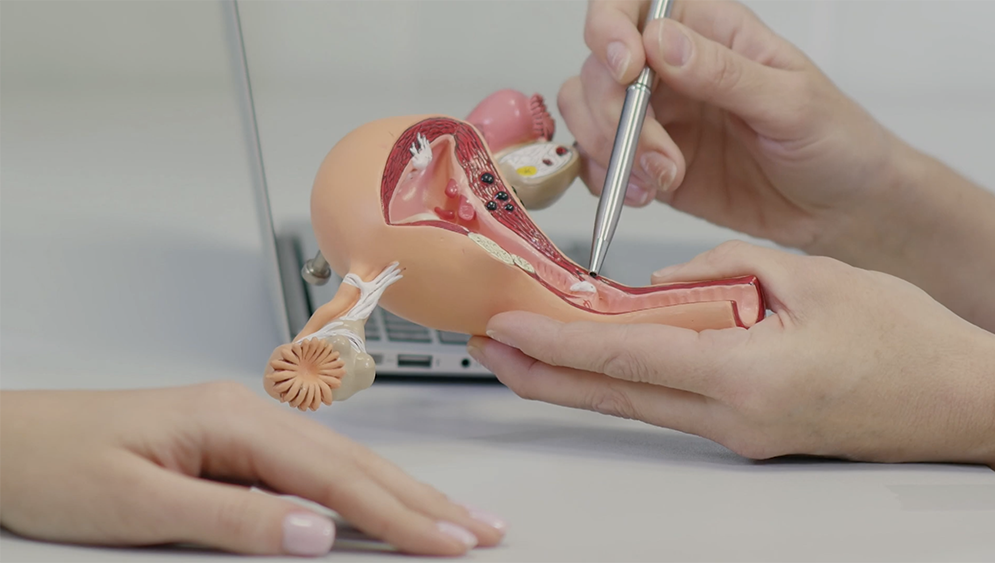Yes, You Need Your Annual Well-Woman Exam
You’re looking at your list of to-dos and you see “schedule my annual well-woman exam” and think: Do I really need to make that appointment?
The answer is YES!
Many people think you only need to go if you’re due for a pap test, but that’s far from the truth. Your annual well-woman exam is an opportunity to connect with your provider about your health. This visit is for you to discuss any current concerns or questions with your Women’s Health Connecticut provider. This routine visit to your provider is crucial for your overall health; cervical cancer screening is just one part of that.
What is a Well-Woman Exam?
The annual well-woman exam is preventative care that specifically addresses women’s health issues. It is performed in addition to your yearly physical and must be completed by a women’s health practitioner, such as an ObGyn or Midwife.
While Pap tests are important, an annual well-woman exam is so much more than just a Pap test and is very important to your overall health and wellness. According to ACOG, you should still visit your women’s health provider at least once a year. Your routine visit is a good time for you and your provider to talk about any number of common concerns, such as:
- Problems with sex, birth control, pelvic pain, or abnormal bleeding
- Testing for STIs (sexually transmitted infections)
- Getting the vaccines you need, having your blood pressure checked, and other general medical issues
- Having a breast exam and pelvic exam
Key Components of a Well-Woman Exam
During your appointment, your provider will conduct several examinations. What exactly is included depends on your individual medical history. The general exam consists of several components: reviewing your health history and any lifestyle factors, a pelvic exam, a breast exam, testing and, if necessary, a pap test.
Physical and Pelvic Exam
During the physical exam, doctors usually measure height, weight and blood pressure, listen to your lungs and feel your stomach and neck for anything unusual.
You may also have a pelvic exam, which is a physical examination of your pelvic organs. During a pelvic exam, your healthcare provider will insert two lubricated, gloved fingers into your vagina to check on your uterus, ovaries, cervix and fallopian tubes. The exam also checks for any irregularities in and around your vagina and rectum.
Breast Exam
During a clinical breast exam (CBE), your provider will:
- Visually inspect your breasts, looking for changes in size, shape or appearance (e.g., dimpling, redness, or rashes)
- Gently feel your breast tissue in a circular pattern, using their fingertips, moving from the outer edges towards the nipple. They’re looking for any lumps, thickened areas, or tenderness.
- Provide guidance on self-examinations.
It’s important to note that the American Cancer Society does not recommend clinical breast exams as a preventative measure for breast cancer. Women and people with breasts should begin getting regular mammograms starting at age 45 or earlier if they have a history of breast cancer in their family or other extenuating circumstances.
Pap Smear
A Pap smear, or pap test , is a screening test that checks for abnormal cells in the cervix, which is the lower part of the uterus that opens into the vagina. Pap tests are one of the ways we screen for Human Papillomavirus (HPV), the leading cause of cervical cancer.
During a pap test, your healthcare provider collects a small sample of cells from the cervix using a swab or brush. The test helps detect early changes in the cells that could lead to cervical cancer and other issues, such as infections.
The American College of Obstetricians and Gynecologists (ACOG) recommends getting regular pap tests starting at age 21, regardless of sexual activity. Your provider will give guidance around testing thereafter based on your family and personal medical history and current lifestyle.
STI Testing
STI (Sexually Transmitted Infection) testing is an essential part of preventive healthcare and is often included in a well-woman exam. Here’s what you can expect during the process:
- Discussing your personal and medical history, including sexual partners, use of protection and any changes in your health (such as discharge, smell, itching or pain)
- Routine screenings usually cover Chlamydia, Gonorrhea, HV and Syphilis. Depending on any present symptoms or other factors, your healthcare provider may also recommend testing for Herpes (HSV), HPV, and Hepatitis B or C.
- There are three ways to collect samples for STI testing:
- Urine Test: You’ll be asked to provide a urine sample.
- Blood Test: A small blood sample is drawn to test for infections like HIV, syphilis, or hepatitis.
- Swab Test: Either during a pap test or a vaginal, throat, cheek or rectal swab
The most important thing is to be open and honest with your provider so they can help you. They are not there to judge or share your confidential information with anybody.
Key Components of a Well-Woman Exam
You should be comfortable and open with your healthcare provider so that you will attend your annual visit and be honest with them. Your yearly exam is for you and your health, so we want to ensure you have everything you need.
Don’t put off your annual well-woman exam – request an appointment today!
Common Questions About Pap Smears and Well-Woman Exams
Is a well-woman exam the same as an annual physical?
No, your annual well-woman exam is strictly for issues related to women’s health, such as cervical health, breast exams and anything related to your reproductive health.
What happens at a physical for a woman?
Each well-woman visit is tailored to your age, medical history, and unique health needs. These appointments are an opportunity to focus on your overall well-being, with special attention to your breasts, vagina, cervix, and uterus. Your healthcare provider will check in about any changes in your menstrual cycle, your contraceptive choices, or any discomfort you might be experiencing in your breasts or pelvis. If you’re sexually active, STI testing or a urine sample for pregnancy screening might also be part of your visit.
During the physical exam, your provider will typically perform a breast exam and, if needed, a pelvic exam to ensure everything looks and feels healthy. Afterward, they’ll talk through any additional screenings, vaccinations, or follow-up care you might need. Think of your well-woman visit as a safe space to ask questions, share concerns, and leave feeling empowered about your health.
What is the difference between a Pap smear and a pelvic exam?
Pelvic exams and Pap tests serve different purposes. During a pelvic exam, your provider will gently check your vagina, cervix, uterus, ovaries, and rectum for any signs of cysts, irritation, unusual discharge, or other concerns. This quick exam typically takes just a few minutes.
A Pap smear may also be included if you’re due for one. This involves collecting a small sample of cells from your cervix, which is then sent to a lab to screen for abnormalities, including signs of cervical cancer.
Your provider will ensure you’re comfortable throughout and answer any questions.
How often should you get a pap test?
It depends on your age and personal and family medical history.
If you have a weakened immune system or are sexually active before the age of 21, you may need a pap test sooner. Additionally, if your pap test returns abnormal results, your provider may ask you to test more frequently to monitor you.
Can you get a pap smear on your period?
Yes, you can get a pap smear while on your period. While it is best to schedule your exam when you are not on your period, if it catches you by surprise, just alert your healthcare provider before the start of the exam. However, we recommend you make the best decision for yourself and your comfort.
Do pap tests test for STDs?
No, they do not. Pap tests only look for abnormal changes to the cells in your cervix.





